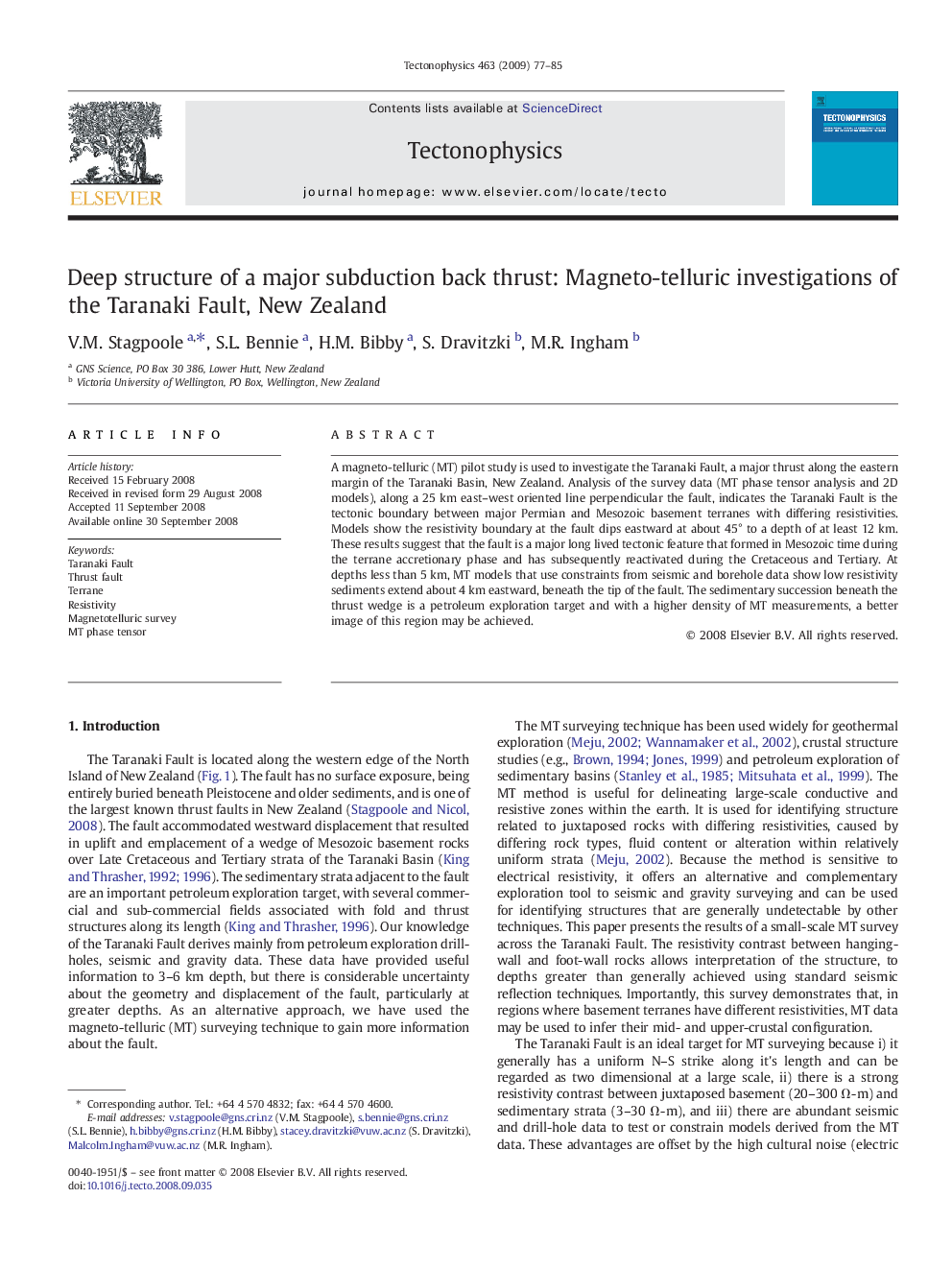| Article ID | Journal | Published Year | Pages | File Type |
|---|---|---|---|---|
| 4694338 | Tectonophysics | 2009 | 9 Pages |
A magneto-telluric (MT) pilot study is used to investigate the Taranaki Fault, a major thrust along the eastern margin of the Taranaki Basin, New Zealand. Analysis of the survey data (MT phase tensor analysis and 2D models), along a 25 km east–west oriented line perpendicular the fault, indicates the Taranaki Fault is the tectonic boundary between major Permian and Mesozoic basement terranes with differing resistivities. Models show the resistivity boundary at the fault dips eastward at about 45° to a depth of at least 12 km. These results suggest that the fault is a major long lived tectonic feature that formed in Mesozoic time during the terrane accretionary phase and has subsequently reactivated during the Cretaceous and Tertiary. At depths less than 5 km, MT models that use constraints from seismic and borehole data show low resistivity sediments extend about 4 km eastward, beneath the tip of the fault. The sedimentary succession beneath the thrust wedge is a petroleum exploration target and with a higher density of MT measurements, a better image of this region may be achieved.
